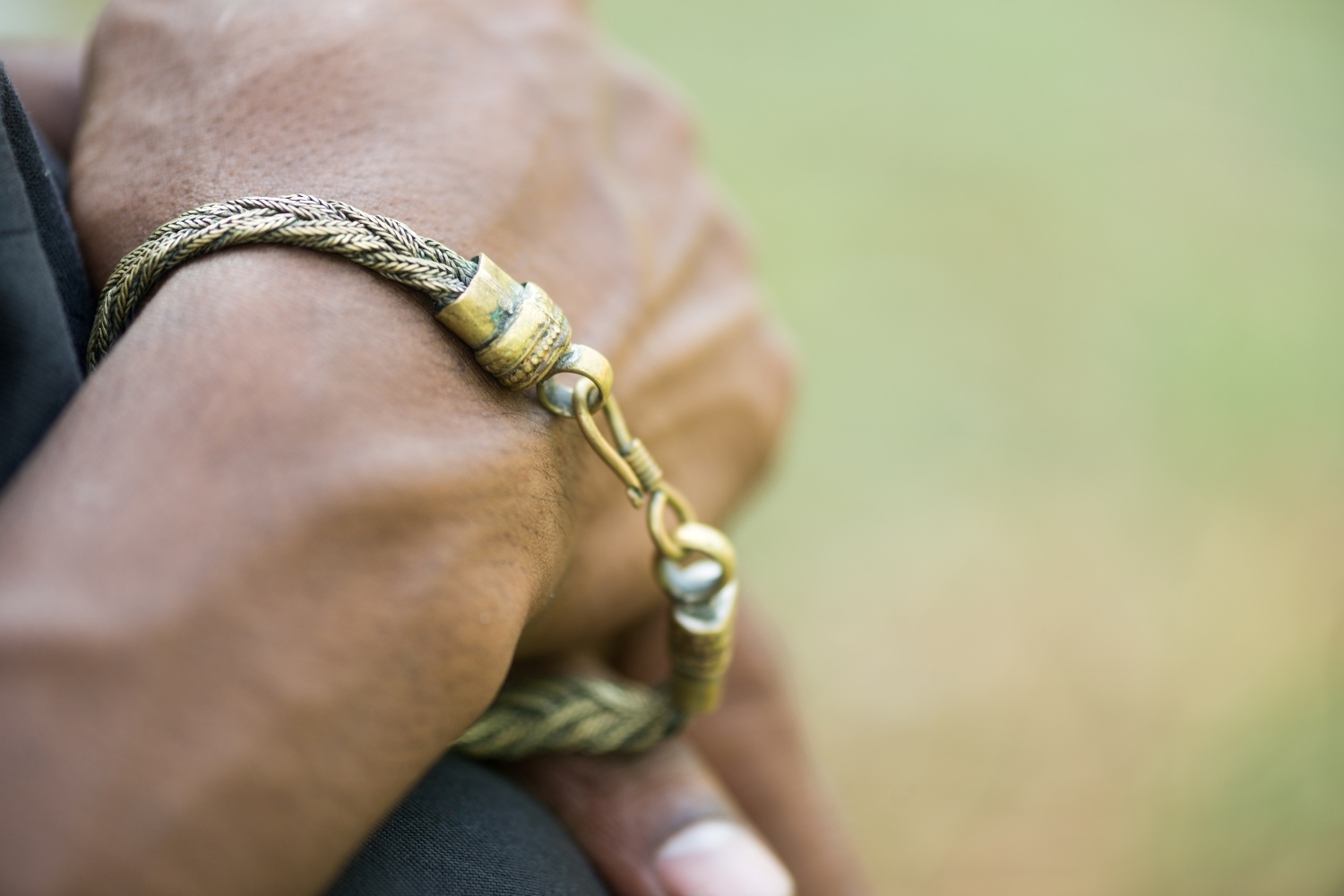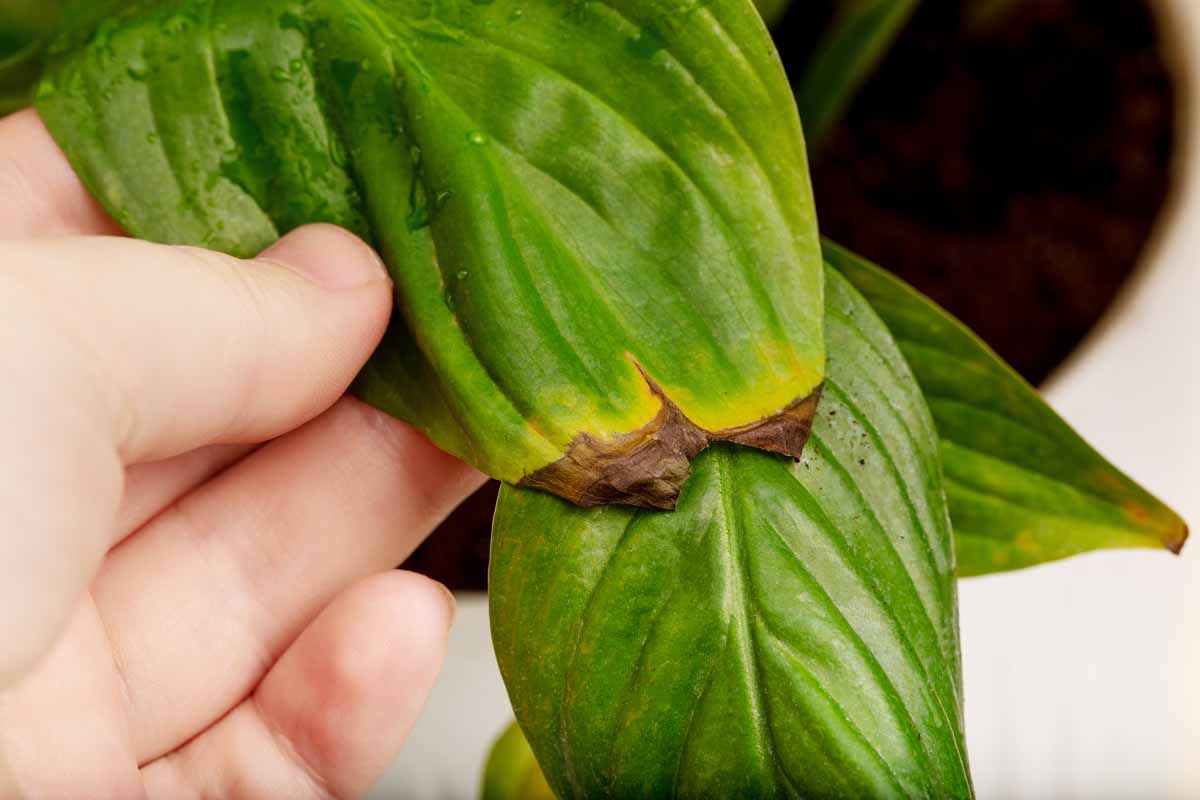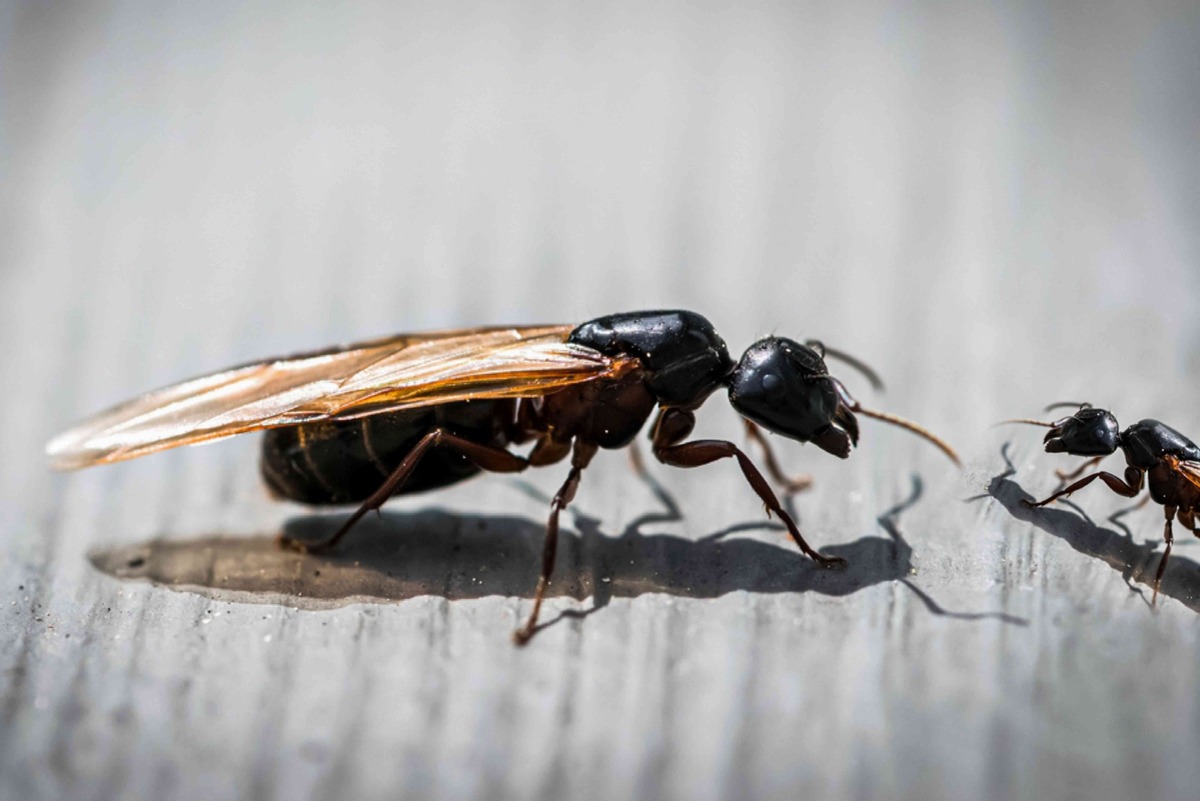Home>Science>The Surprising Reason Why Copper Bracelets Turn Your Wrist Green


Science
The Surprising Reason Why Copper Bracelets Turn Your Wrist Green
Published: January 22, 2024
Discover the science behind why copper bracelets turn your wrist green. Uncover the surprising reason and learn more about the chemical reaction.
(Many of the links in this article redirect to a specific reviewed product. Your purchase of these products through affiliate links helps to generate commission for Noodls.com, at no extra cost. Learn more)
Table of Contents
Introduction
Copper has been utilized for centuries due to its versatile properties and aesthetic appeal. From ancient civilizations to modern-day artisans, this metal has been fashioned into various objects, including jewelry and decorative items. However, one common phenomenon associated with wearing copper jewelry, particularly bracelets, is the appearance of a greenish discoloration on the skin. This peculiar transformation has puzzled many, prompting questions about its origin and implications.
In this article, we will delve into the intriguing world of copper bracelets and explore the surprising reason behind the green discoloration they leave on the skin. By unraveling the chemistry behind this phenomenon, we aim to provide a comprehensive understanding of why this occurs and offer insights into how to prevent it. Join us on this fascinating journey as we uncover the mysteries behind the interaction of copper with the human body and the environment.
The Chemistry Behind Green Discoloration
The transformation of a copper bracelet from its original lustrous hue to a greenish tint on the skin is a result of a fascinating chemical reaction. This green discoloration, often mistaken for a sign of low-quality copper, is actually an intriguing manifestation of the metal's interaction with external elements and the human body.
At the heart of this phenomenon lies a process known as oxidation. When copper comes into contact with air and moisture, a series of chemical reactions ensue, leading to the formation of copper oxide. This compound, characterized by its greenish color, is responsible for the distinct discoloration observed on the skin after wearing a copper bracelet for an extended period.
The key player in this reaction is oxygen, which combines with the copper surface to form copper oxide. This process, known as oxidation, is accelerated by the presence of moisture, such as sweat, on the skin. As a result, the gradual accumulation of copper oxide on the bracelet's surface gives rise to the noticeable green tint transferred onto the skin.
It is important to note that this transformation is not indicative of inferior quality or harmful properties of the copper bracelet. Instead, it is a natural consequence of the metal's inherent reactivity with its surroundings. In fact, the formation of copper oxide acts as a protective layer, guarding the underlying copper from further corrosion and degradation.
Understanding the chemistry behind this green discoloration offers a deeper appreciation for the dynamic nature of copper and its interactions with the environment. This captivating process serves as a testament to the intricate relationship between metals, moisture, and air, unveiling the captivating world of chemical reactions that unfold in everyday scenarios.
As we continue our exploration, we will delve into the role of sweat and skin acidity in influencing the formation of copper oxide, shedding light on the intricate interplay between the human body and this remarkable metal. Join us as we unravel the captivating science behind this intriguing phenomenon.
The Role of Sweat and Skin Acidity
Sweat, a natural byproduct of the body's thermoregulation process, plays a significant role in the formation of the greenish discoloration associated with copper bracelets. When wearing a copper bracelet, the skin's surface comes into contact with the metal, leading to a transfer of sweat onto the copper's surface. This interaction sets the stage for a fascinating chemical reaction that contributes to the gradual formation of copper oxide and the subsequent green tint observed on the skin.
The composition of sweat, which primarily consists of water and electrolytes, serves as a catalyst for the oxidation process. The moisture present in sweat provides the necessary medium for the copper to react with oxygen from the surrounding air, initiating the formation of copper oxide. Additionally, the electrolytes in sweat, such as sodium and potassium, contribute to the conductivity of the solution, further enhancing the oxidation of copper on the bracelet's surface.
Moreover, the acidity level of an individual's skin can influence the rate and extent of copper oxidation. The natural acidity of the skin, often referred to as the skin's pH, varies among individuals and can be influenced by factors such as diet, hygiene practices, and overall health. Skin with a higher acidity level can expedite the oxidation process, leading to a more pronounced green discoloration, while lower skin acidity may result in a slower rate of oxidation and a milder discoloration effect.
The interplay between sweat and skin acidity creates a dynamic environment for the oxidation of copper, shaping the intensity and duration of the green discoloration observed on the skin. This intricate relationship highlights the multifaceted nature of the interaction between the human body and copper jewelry, offering a glimpse into the captivating interplay of biological and chemical processes.
By understanding the influential role of sweat and skin acidity in the formation of green discoloration, individuals can gain valuable insights into the unique dynamics at play when wearing copper bracelets. This knowledge empowers individuals to make informed decisions regarding the maintenance and care of copper jewelry, fostering a deeper appreciation for the intriguing interconnections between the human body, chemistry, and everyday experiences.
As we unravel the impact of copper oxidation on the skin, we will explore practical strategies to prevent and minimize the green discoloration associated with wearing copper bracelets. Join us as we delve into effective measures to preserve the lustrous beauty of copper jewelry while embracing the captivating chemistry behind its interaction with the human body.
The Impact of Copper Oxidation
The process of copper oxidation, culminating in the formation of green discoloration on the skin, extends beyond its visual manifestation, encompassing a range of implications that underscore the dynamic nature of this chemical transformation. As copper interacts with external elements and undergoes oxidation, several notable impacts emerge, shaping the overall experience of wearing copper bracelets.
One significant impact of copper oxidation is the development of a patina-like layer on the surface of the metal. This layer, predominantly composed of copper oxide, not only contributes to the green discoloration observed on the skin but also serves as a protective barrier for the underlying copper. By forming a stable and adherent coating, copper oxide shields the metal from further corrosion and degradation, thereby enhancing the longevity of the bracelet. This protective aspect of copper oxidation highlights the dual nature of the green discoloration, signifying both a natural chemical process and a safeguarding mechanism for the copper jewelry.
Furthermore, the presence of copper oxide resulting from oxidation contributes to the aesthetic evolution of the bracelet. Over time, the greenish patina that develops on the copper surface adds a distinctive character to the jewelry, reflecting the dynamic interaction between the metal and its environment. This transformation imbues the bracelet with a sense of history and uniqueness, as the patina becomes a visual testament to the enduring nature of copper and its capacity to adapt and evolve over time.
In addition to its protective and aesthetic implications, copper oxidation also underscores the inherent reactivity of copper and its sensitivity to environmental factors. The formation of copper oxide serves as a tangible reminder of the intricate interplay between metals, moisture, and air, offering a captivating glimpse into the world of chemical reactions that unfold in everyday scenarios. This realization fosters a deeper appreciation for the dynamic nature of copper and its ability to engage in transformative processes, transcending its role as a mere adornment to embody a living, evolving entity.
As we unravel the multifaceted impacts of copper oxidation, it becomes evident that the green discoloration resulting from this process encompasses a rich tapestry of implications, ranging from protective attributes to aesthetic nuances. Embracing the impact of copper oxidation allows individuals to perceive the green discoloration not as a mere surface phenomenon but as a testament to the remarkable adaptability and resilience of copper jewelry.
Join us as we delve into practical strategies to prevent and minimize the green discoloration associated with wearing copper bracelets, empowering individuals to preserve the lustrous beauty of their jewelry while embracing the captivating chemistry behind its interaction with the human body.
How to Prevent Green Discoloration
Preventing green discoloration resulting from the oxidation of copper bracelets involves implementing proactive measures to minimize the interaction between the metal and external elements. By adopting strategic practices, individuals can effectively preserve the original luster of their copper jewelry while mitigating the formation of the greenish tint on the skin.
-
Protective Coatings: Applying a protective coating, such as clear nail polish or specialized jewelry lacquer, to the inner surface of the copper bracelet can create a barrier that impedes direct contact between the metal and the skin. This barrier serves to minimize the transfer of copper ions and oxidation products onto the skin, reducing the likelihood of green discoloration.
-
Intermittent Wear: Limiting the duration of continuous wear can help mitigate the development of green discoloration. Allowing periodic breaks between wearing sessions enables the skin to recover from the effects of sweat and acidity, reducing the opportunity for prolonged copper-skin interaction and oxidation.
-
Regular Cleaning: Employing gentle cleaning methods to remove accumulated sweat and oils from the copper bracelet can prevent the buildup of oxidation products. Using a soft cloth or cotton pad dampened with mild soap and water to gently wipe the bracelet's surface can help maintain its original appearance and minimize the potential for green discoloration.
-
Dry Storage: Storing the copper bracelet in a dry environment when not in use can contribute to preventing oxidation. Moisture accelerates the oxidation process, so ensuring that the bracelet is kept in a dry location, away from humidity and moisture-prone areas, can help preserve its appearance and minimize the formation of green discoloration.
-
Adjusting Skin Acidity: While challenging, maintaining a balanced skin pH through proper skincare and dietary habits may influence the extent of copper oxidation and subsequent green discoloration. Although individual skin acidity levels vary, promoting overall skin health can potentially impact the reaction between sweat, skin acidity, and the copper bracelet.
Implementing these preventive measures empowers individuals to maintain the aesthetic appeal of their copper bracelets while minimizing the occurrence of green discoloration. By incorporating these strategies into their jewelry care routine, individuals can enjoy the beauty and allure of copper jewelry without the concern of unwanted skin discoloration.
As we conclude our exploration of preventive measures, it becomes evident that a proactive approach to caring for copper jewelry not only preserves its visual allure but also enhances the overall experience of wearing these timeless adornments. Join us in embracing these practical strategies to safeguard the radiance of copper bracelets and celebrate the captivating chemistry that defines their interaction with the human body.
Conclusion
In conclusion, the enigmatic green discoloration resulting from wearing copper bracelets unveils a captivating interplay of chemistry, biology, and environmental factors. The transformation of copper jewelry, facilitated by oxidation and influenced by sweat and skin acidity, offers a compelling glimpse into the dynamic nature of metal interactions with the human body. Embracing the multifaceted implications of copper oxidation, from its protective attributes to the aesthetic evolution of the jewelry, enriches our understanding of this intriguing phenomenon.
As we navigate the realm of preventive measures, it becomes evident that proactive strategies, such as protective coatings, intermittent wear, regular cleaning, dry storage, and adjustments to skin acidity, empower individuals to preserve the original luster of their copper bracelets while minimizing the occurrence of green discoloration. By integrating these practical approaches into their jewelry care routine, individuals can savor the timeless allure of copper jewelry without the concern of unwanted skin discoloration, fostering a deeper appreciation for these cherished adornments.
Furthermore, the enduring legacy of copper bracelets, characterized by their evolving patina and resilience in the face of oxidation, underscores the remarkable adaptability of this metal. The green discoloration becomes a visual testament to the enduring nature of copper, reflecting its capacity to adapt and transform over time, thereby infusing each piece with a unique narrative of its journey.
In essence, the surprising reason behind copper bracelets turning the skin green unravels a captivating narrative of chemical reactions, protective mechanisms, and aesthetic evolution. By delving into the chemistry behind this phenomenon and embracing practical strategies to prevent green discoloration, individuals can embark on a journey of discovery, celebrating the enduring beauty and dynamic nature of copper jewelry. This newfound understanding not only enhances the appreciation for these timeless adornments but also fosters a deeper connection with the captivating chemistry that defines their interaction with the human body.














